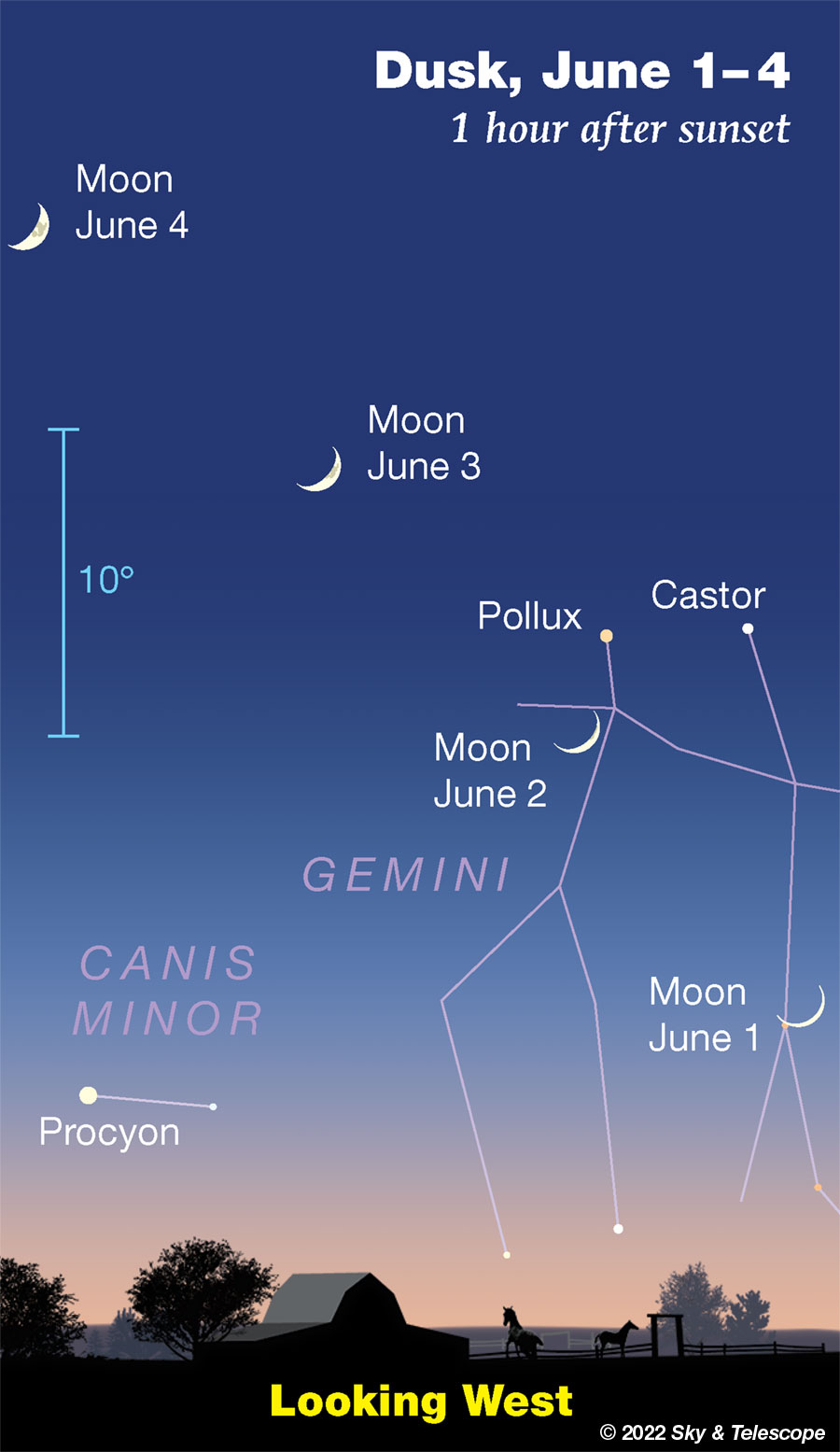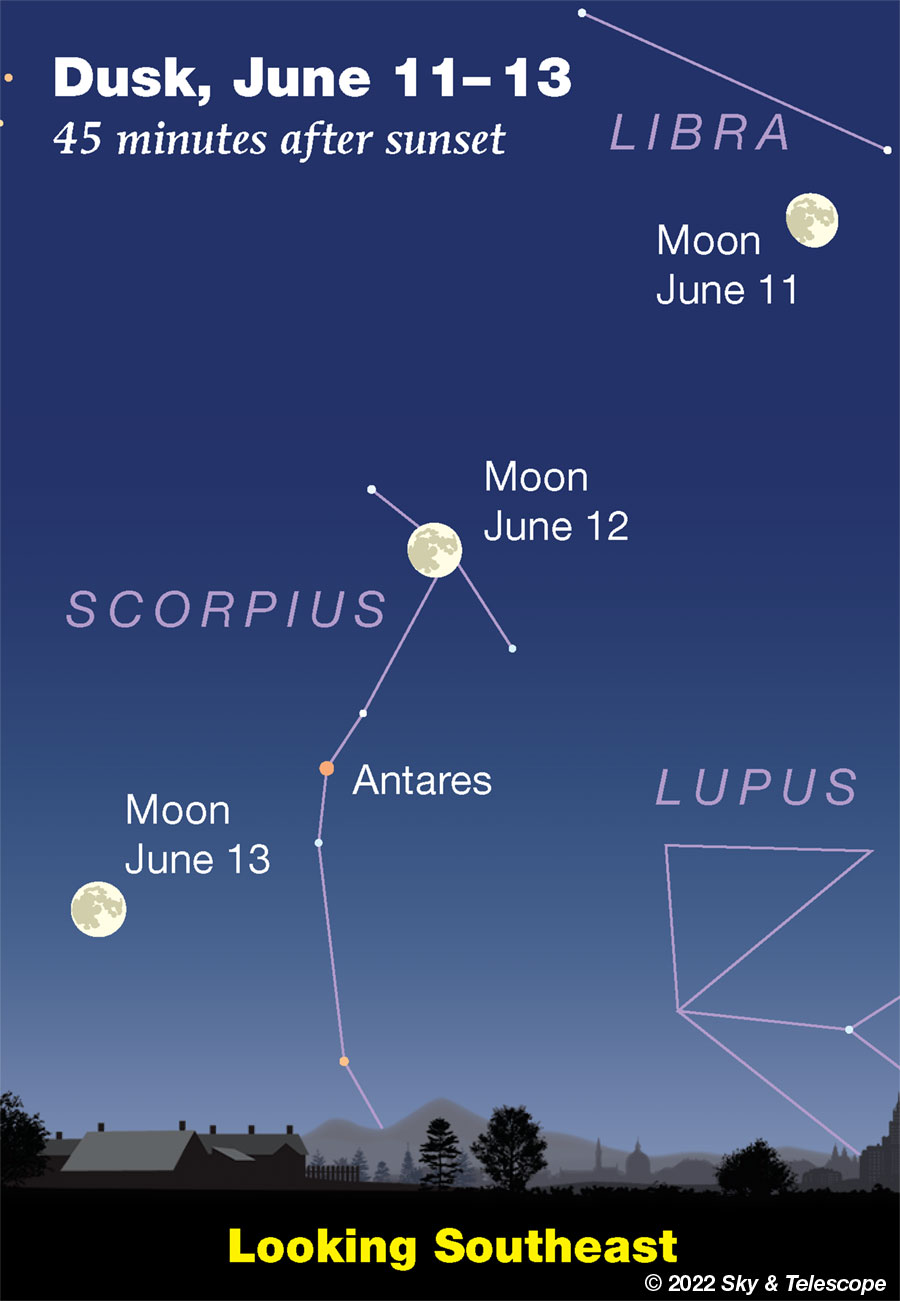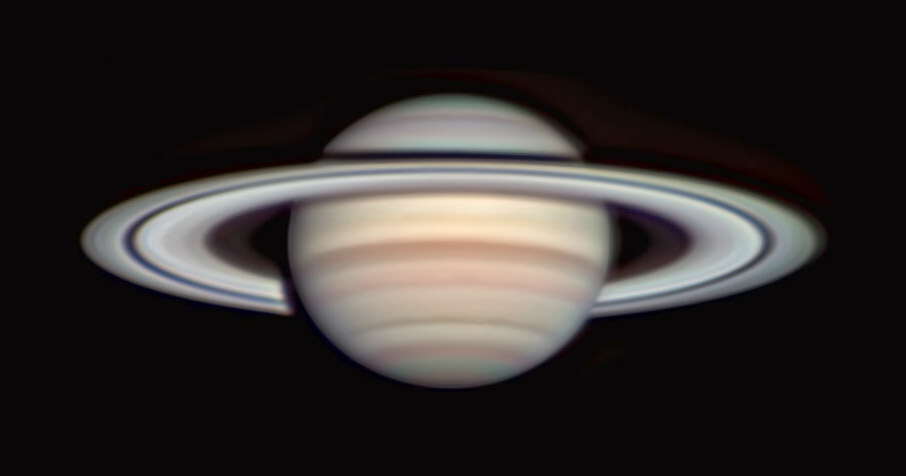The summer sky is so difficult in the northern hemisphere for astronomy. There is probably < 7 hours of good viewing right now.
BY: ALAN MACROBERT JUNE 3, 2022  0 0
GET ARTICLES LIKE THIS SENT TO YOUR INBOX
Email (required) *
Constant Contact Use.
24
FRIDAY, JUNE 3
¦ After dark, Vega shines as the brightest star very high in the east. Barely lower left of it is 4th-magnitude Epsilon Lyrae, the Double-Double. Epsilon forms one corner of a roughly equilateral triangle with Vega and Zeta Lyrae. The triangle is less than 2° on a side, hardly the width of your thumb at arm's length.
Binoculars easily resolve Epsilon. And a 4-inch telescope at 100× or more should resolve each of Epsilon's wide components into a tight pair.
Zeta Lyrae is also a double star for binoculars; much tougher, but plainly resolved in a telescope. Delta Lyrae, below Zeta, is a much wider and easier binocular pair, orange and blue.
¦ The waxing Moon this evening shines upper left of Pollux and Castor, as shown below.
 The waxing crescent Moon has reappeared in the western evening sky, as lunation number 1230 gets under way. The "lunation number" is a running count of lunar months starting at each new Moon. It's more properly called called the Brown Lunation Number; it began with the first new Moon of 1923, the year when Ernest William Brown's improved lunar theory (mathematical model of the Moon's complex orbit) was introduced to compute the Moon's position and phases for the major national astronomical almanacs. The waxing crescent Moon has reappeared in the western evening sky, as lunation number 1230 gets under way. The "lunation number" is a running count of lunar months starting at each new Moon. It's more properly called called the Brown Lunation Number; it began with the first new Moon of 1923, the year when Ernest William Brown's improved lunar theory (mathematical model of the Moon's complex orbit) was introduced to compute the Moon's position and phases for the major national astronomical almanacs.
Other lunar-month counts also exist. The one boasting the highest number is the Hebrew Lunation Number, starting with the zero mark of the Hebrew calendar on October 7, 3761 BC. We're in Hebrew Lunation 72,464.
A lunar month (synodic month) averages 29.530575 days long. By comparison, our civil calendar months, ranging from 28 to 31 days, average 30.436875 days long in the Gregorian calendar now in use. This means that any given phase of the Moon occurs about one day earlier each calendar month on average. SATURDAY, JUNE 4
¦ After dark, the crescent Moon forms a long isosceles (two sides equal) triangle with Regulus and Gamma Leonis to the Moon's upper left. The Moon marks the long end of the triangle. Gamma Leonis is a bit fainter than Regulus.
Tomorrow evening the triangle will be much shorter and flatter, but still isosceles.
¦ As we count down the last 17 days to official summer (the solstice comes on June 21st ), the Summer Triangle stands high and proud in the east after dark. Its top star is bright Vega. Deneb is the brightest star to Vega's lower left, by 2 or 3 fists at arm's length. Look for Altair a greater distance to Vega's lower right. Altair shines midway in brightness between Vega and Deneb.
If you have a dark enough sky, the Milky Way runs across the lower part of the Triangle, from side to side.
SUNDAY, JUNE 5
¦ Now the Moon shines just 5° from Regulus and from Gamma Leonis. They're lower left of it and above it, respectively.
MONDAY, JUNE 6
¦ The Moon forms yet another isosceles triangle with Gamma Leonis and Regulus. This time the stars are to the Moon's right and lower right.
TUESDAY, JUNE 7
¦ The Big Dipper has swung around to hang down by its handle high in the northwest. The middle star of its handle is Mizar, with tiny little Alcor right next to it. On which side of Mizar should you look for Alcor? As always, on the side toward Vega! Which is now the brightest star in the east.
WEDNESDAY, JUNE 8
¦ Soon after dark, the W of Cassiopeia finally rests perfectly level — you don't often see it like that! — low in the north-northeast.
If you don't live too far south, that is. Farther south than Atlanta or Los Angeles, at least part of Cassiopeia skims below the horizon.
THURSDAY, JUNE 9
¦ Spica shines to the lower left of the Moon tonight.
¦ While we're at it, Spica forms an almost perfectly equilateral triangle with brighter Arcturus high above it and Denebola, the tail of Leo, off toward Spica's right. All three sides of the triangle are close to 35° long (35.3°, 35.1°, and 32.8°). S&T columnist George Lovi named this the Spring Triangle (in the March 1974 issue), and for such a near-perfect equilateral, I say the name ought to be revived.
FRIDAY, JUNE 10
¦ Now Spica sparkles to the Moon's right after dusk. Look roughly twice as far lower right of Spica, and there are the four brightest stars of sail-shaped Corvus.
SATURDAY, JUNE 11
¦ The Big Dipper hangs high in the northwest as the stars come out. The Dipper's Pointers, currently its bottom two stars, point lower right toward Polaris. Above Polaris, and looking very similar to it, is Kochab, the lip of the dim Little Dipper's bowl.
Kochab stands precisely above Polaris around the end of twilight or a little after. How precisely can you time this event for your location, perhaps using the vertical edge of a building?

The Moon will cross the head of Scorpius on its way to full on the 13th.
THIS WEEK'S PLANET ROUNDUPMercury is deep in the glow of sunrise.
Venus (magnitude –4.0) rises soon after the beginning of dawn. Look for it just left of due east. It's at least three fists at arm's length lower left of Jupiter. Venus will continue to rise around the beginning of dawn all the way through August.
Mars and Jupiter, very different at magnitudes +0.6 and –2.2 respectively, shine together before and during dawn in the east-southeast. Little Mars is lower left of bright Jupiter.
 Jupiter on May 23rd, imaged by Christopher Go. South is up. Its Great Red Spot is rimmed on the north side by dark "eyeliner," and the North Equatorial Belt remains dark and narrow.Saturn, magnitude +0.7, glows in eastern Capricornus a good 40° (about four fists) to the right of Jupiter before dawn. The little star 2° to Saturn's lower right is Delta Capricorni, magnitude 2.8. Jupiter on May 23rd, imaged by Christopher Go. South is up. Its Great Red Spot is rimmed on the north side by dark "eyeliner," and the North Equatorial Belt remains dark and narrow.Saturn, magnitude +0.7, glows in eastern Capricornus a good 40° (about four fists) to the right of Jupiter before dawn. The little star 2° to Saturn's lower right is Delta Capricorni, magnitude 2.8.
 Christopher Go took this image of Saturn on April 22nd. South is up. Saturn's rings this year are less tilted from our line of sight than in the past few years. Christopher Go took this image of Saturn on April 22nd. South is up. Saturn's rings this year are less tilted from our line of sight than in the past few years.
Go images planets using a 14-inch Schmidt-Cassegrain scope on his apartment balcony, a top-of-the-line astro video camera, and sophisticated image stacking and processing. Details are on his website.Uranus is buried in the eastern dawn, near Venus.
Neptune, magnitude 7.9, is some 10° west (right) of Jupiter before dawn begins. |





 0
0 The waxing crescent Moon has reappeared in the western evening sky, as lunation number 1230 gets under way. The "lunation number" is a running count of lunar months starting at each new Moon. It's more properly called called the Brown Lunation Number; it began with the first new Moon of 1923, the year when Ernest William Brown's improved lunar theory (mathematical model of the Moon's complex orbit) was introduced to compute the Moon's position and phases for the major national astronomical almanacs.
The waxing crescent Moon has reappeared in the western evening sky, as lunation number 1230 gets under way. The "lunation number" is a running count of lunar months starting at each new Moon. It's more properly called called the Brown Lunation Number; it began with the first new Moon of 1923, the year when Ernest William Brown's improved lunar theory (mathematical model of the Moon's complex orbit) was introduced to compute the Moon's position and phases for the major national astronomical almanacs.
 Jupiter on May 23rd, imaged by
Jupiter on May 23rd, imaged by 